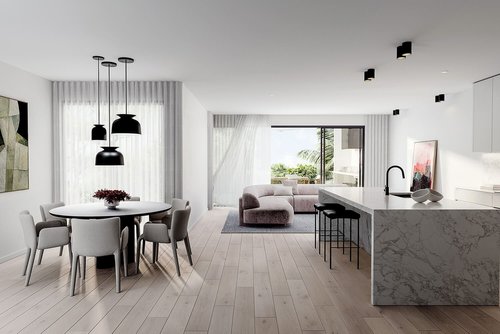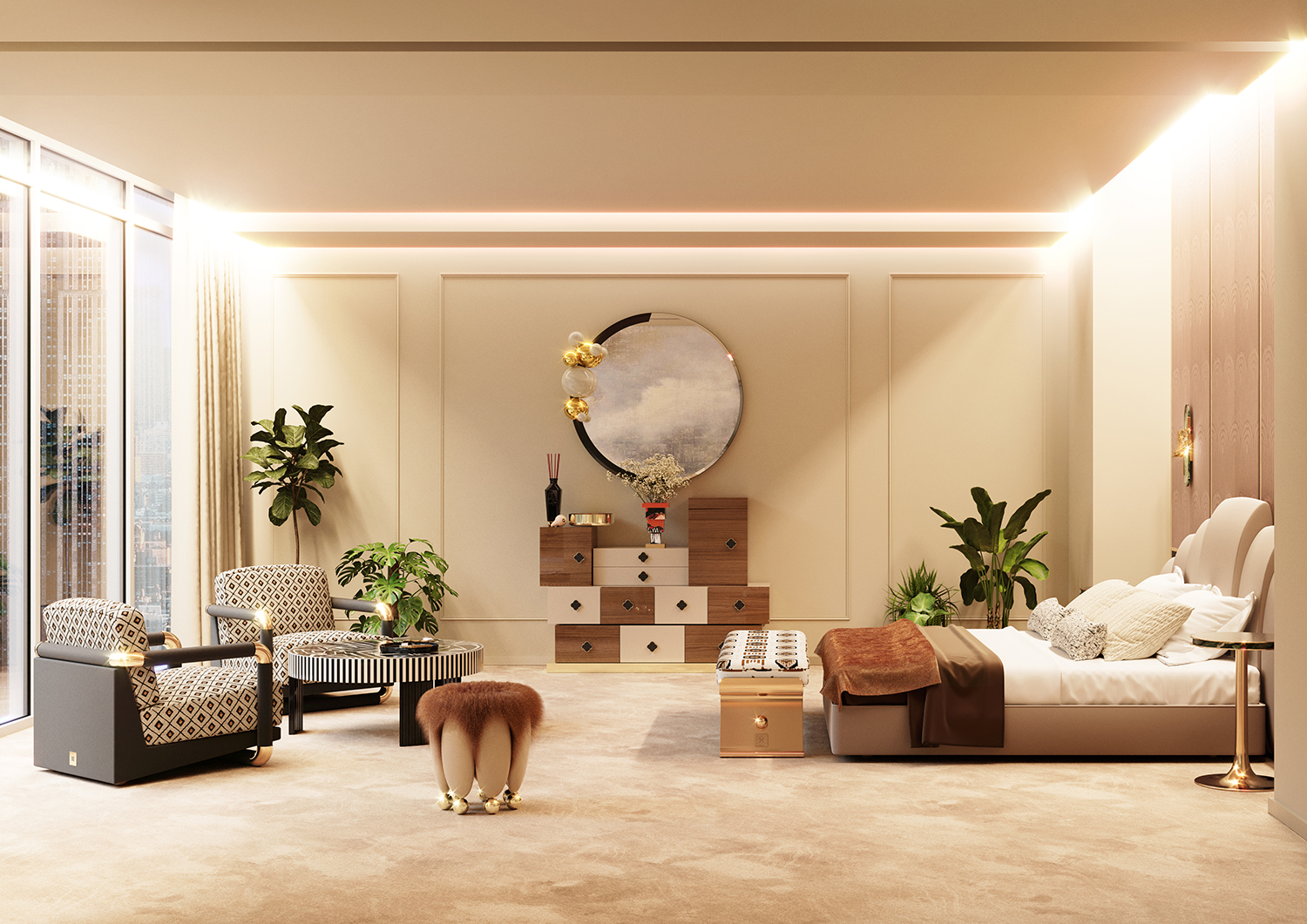Discover the Art of Living with an Interior Designer Miami
Discover the Art of Living with an Interior Designer Miami
Blog Article
Why Understanding the Concepts of Interior Design Is Crucial for Effective Space Planning
Recognizing the concepts of interior style is essential to reliable space preparation, as it lays the groundwork for developing settings that harmonize functionality with visual allure. Necessary elements such as percentage, balance, and flow are not simply attractive considerations; they are essential in enhancing how a space is used. When these principles are attentively used, the result is an ambience that urges both performance and wellness. Numerous overlook how these concepts link with sensible applications, leading to missed out on chances in layout efficiency. Discovering this connection exposes understandings that might change any area.
Importance of Room Planning
Area planning is a basic aspect of interior layout that dramatically affects the performance and aesthetics of a room. It includes the critical arrangement of furniture, fixtures, and architectural aspects to maximize making use of readily available area while enhancing the general customer experience. Effective space planning addresses various elements, consisting of flow, availability, and the specific requirements of the occupants.
One of the primary advantages of room preparation is its ability to improve spatial performance. Interior design Miami. By thoughtfully organizing a design, designers can make certain that every area serves a function, reducing mess and promoting a feeling of order. Additionally, correct space planning promotes an unified atmosphere, enabling seamless activity and interaction within an area
In addition, successful area preparation takes into consideration natural light, sightlines, and the relationship between different areas. This holistic method not only raises the visual allure yet also contributes to the well-being and performance of the owners. Inevitably, a well-executed area plan is critical in producing a balanced and welcoming ambience, making it necessary for any type of indoor design project.
Secret Concepts of Interior Decoration

One essential principle is equilibrium, which can be symmetrical, unbalanced, or radial. In proportion equilibrium creates a feeling of order, while asymmetrical balance supplies a more dynamic aesthetic charm. An additional vital concept is proportion and scale, ensuring that the size of furniture and decor elements relate sympathetically to every other and the overall area.
Color concept additionally plays a substantial duty, affecting state of mind and assumption. Developers use color schemes to stimulate particular sensations and improve the spatial experience. Additionally, the principle of rhythm includes creating a feeling of movement with repeating of patterns, colors, or forms, leading the eye throughout the area.
Lastly, the principle of emphasis guides attention to prime focus, enabling for a clear story within the style. Luxury Interior designer Miami. By sticking to these vital principles, indoor designers can develop environments that not only satisfy useful needs but likewise reverberate with the owners on an emotional level
Influence On Functionality and Flow

The arrangement of furniture, the choice of materials, and the integration of innovation all play critical functions in achieving ideal functionality. For example, positioning seating locations in proximity to work areas can promote communication and partnership, thus boosting efficiency. Additionally, making certain that paths are clear and unhampered enables efficient motion, lowering blockage and advertising an all-natural flow throughout the room.
In addition, including components such as lights and shade can additionally assist in defining locations, making it easier for people to browse their environment. Thoughtful room preparation considers not only the physical facets of layout but also how users interact with their surroundings. Ultimately, a concentrate on performance and circulation not only enhances the individual experience however also boosts the total effectiveness of the space, developing a setting that meets official source the requirements of its occupants while fostering a feeling of consistency and equilibrium.
Enhancing Aesthetic Appeals and State Of Mind
Three vital aspects-- illumination, texture, and color-- play essential duties in enhancing the visual appeals and state of mind of an interior room. Color establishes the emotional tone; warm shades like oranges and reds evoke energy and warmth, while cooler tones such as blues and greens promote calmness and peace. Choosing an unified color palette can transform a space, developing a visually appealing and natural setting.
Appearance includes deepness and interest, adding to the responsive experience within a room. A mix of appearances-- smooth surface areas, luxurious fabrics, and natural materials-- can develop visual intrigue and enhance comfort. Matching a soft velour couch with a smooth glass coffee table can produce a well balanced aesthetic that welcomes interaction.
Lighting, typically a forgotten element, substantially effects mood. Natural light fosters an open, airy environment, while strategically put fabricated lighting can develop warmth and emphasize architectural functions. Dimmer switches make it possible for convenience, enabling adjustments to fit various activities or times of day.
Incorporating these three components attentively not only boosts the aesthetic appeal of a room but likewise cultivates an ambience that reverberates with its desired function, ultimately enriching the total experience for its owners.
Practical Applications in Reality
Applying interior decoration concepts in reality needs a thoughtful strategy that incorporates color, structure, and illumination right into everyday rooms. By understanding just how these aspects interact, individuals can develop environments that are not only aesthetically appealing yet unified and also useful.
As an example, in a small living area, employing a light color palette can make the area really feel larger and more open. Strategic use of mirrors can improve natural light and produce an impression of depth. Integrating numerous appearances via fabrics, such as cushions and rugs, can add heat and passion without frustrating the detects.
Lighting plays a crucial function in specifying the atmosphere. Split lighting, including ambient, task, and accent choices, enables flexibility in state of mind settings. In a home office, as an example, a combination of natural light, workdesk lamps, and ornamental components can boost productivity while find more information keeping a welcoming ambiance.
Moreover, comprehending spatial partnerships and furniture setup can lead to improved capability. By sticking to concepts such as balance and percentage, one can guarantee that areas offer their designated purpose while continuing to be aesthetically pleasing. In general, sensible applications of interior layout principles dramatically boost the livability and charm of any atmosphere.
Final Thought
In verdict, understanding the concepts of interior decoration is crucial for reliable space preparation, as it fosters an equilibrium in between performance and aesthetic appeals. By using essential concepts such as website here proportion, color theory, and flow, designers can create atmospheres that boost both functionality and visual allure. Inevitably, this expertise adds to the advancement of rooms that not only fulfill practical demands but also boost the total environment, resulting in more enjoyable and reliable experiences for individuals.
Comprehending the principles of interior design is fundamental to effective space planning, as it lays the foundation for developing settings that harmonize functionality with aesthetic charm.Space preparation is an essential element of indoor design that dramatically affects the performance and aesthetic appeals of a space. Furthermore, correct area preparation cultivates an unified setting, enabling for smooth motion and communication within an area.
Furthermore, the principle of rhythm involves developing a sense of movement with repetition of shapes, patterns, or shades, assisting the eye throughout the area.
In verdict, recognizing the principles of interior layout is crucial for efficient room preparation, as it promotes a balance in between functionality and appearances.
Report this page